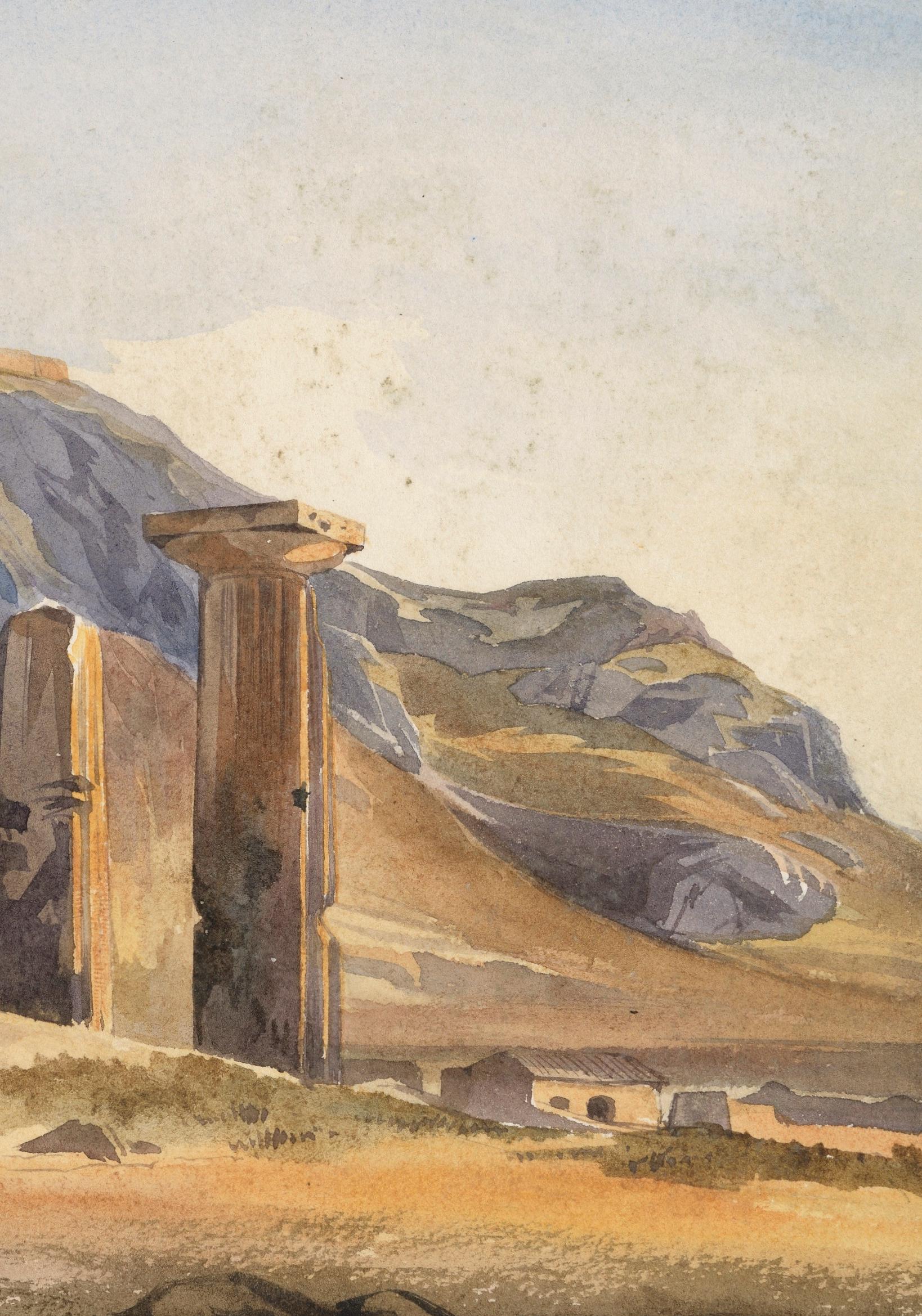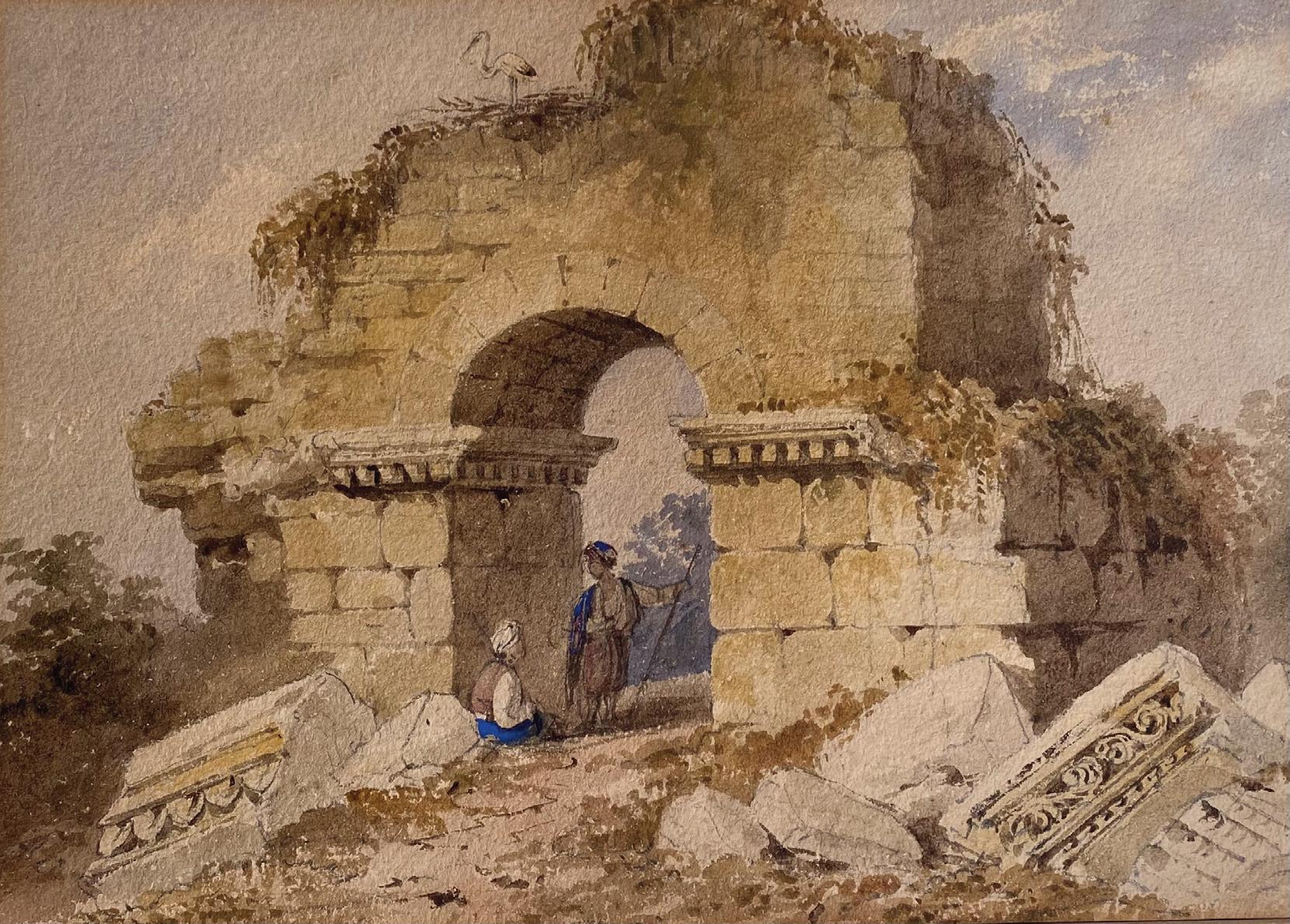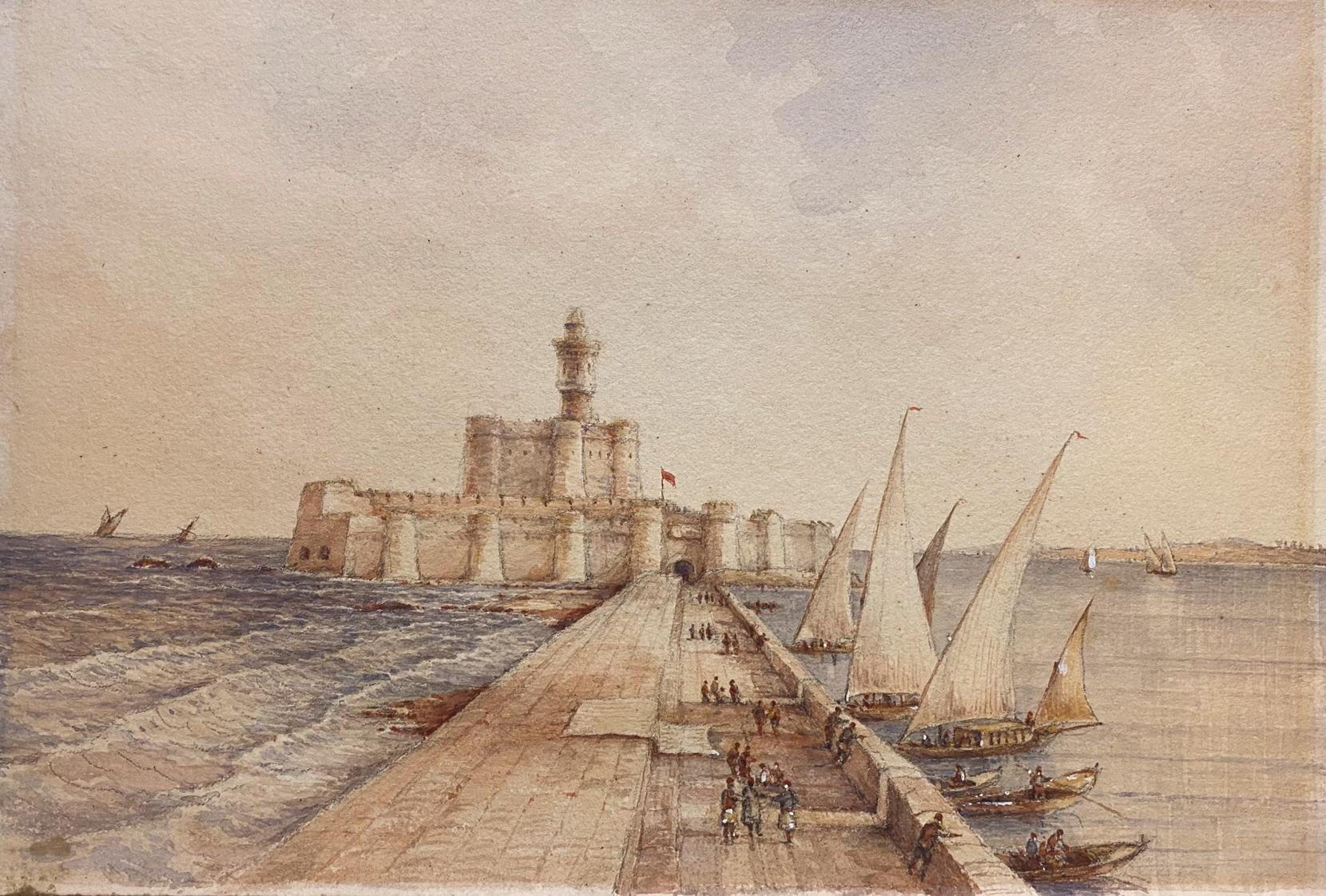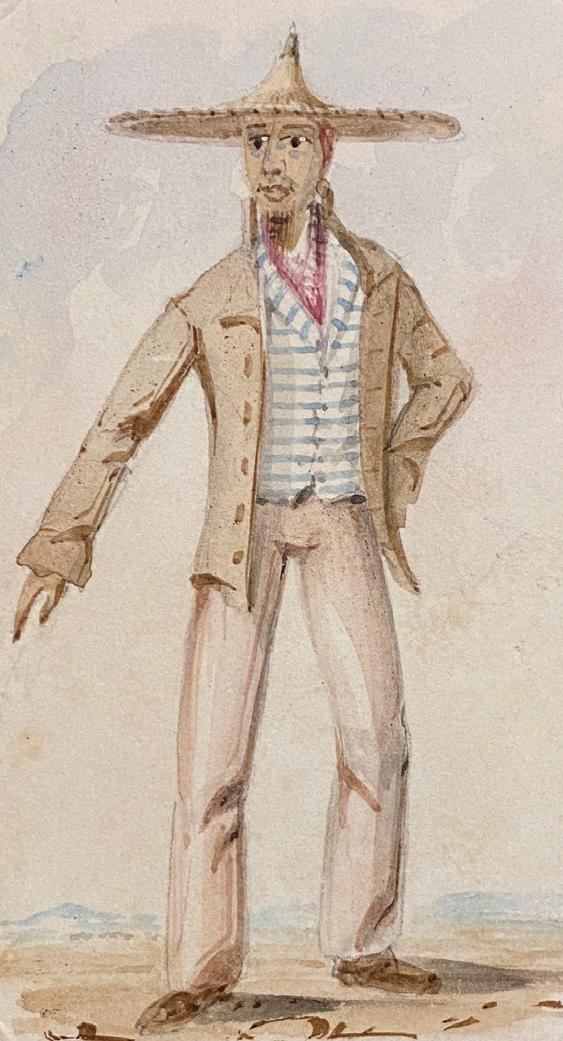
6 minute read
PART TWO
PART TWO Mediterranean & Africa

cat.13 Thomas Hartley Cromek (1809-1873) The Temple of Apollo at Corinth circa 1840
Circa 1840 Watercolour on paper, mounted 17 by 25cm Inscribed lower left ‘T. H. Cromek f., Rome’
After a period of studying the old masters in Italy in 1830, Cromek spent most of the next twenty years travelling around Italy and Greece recording the notable and ancient monuments of these two countries. His obvious abilities as a watercolourist were immediately recognised and, on his retirement in 1860, he was elected an Associate of the New Society of Painters in Water-colour. The subject of this watercolour are the seven remaining monolithic columns of the Temple of Apollo at Corinth, dating from 550-530 BCE, built in the Doric style on the site of an earlier temple. Behind, on the top of a rocky outcrop, is the ancient Acropolis of Corinth, originally fortified but with later Frankish and Venetian additions to those fortifications.
£2750

cat.14 William Page (1794-1872) Figures beneath a ruined arch, possibly Pergamon
First half 19th century Watercolour and pencil on paper laid on card, mounted and framed 25.5 by 18cm Provenance: Christies, 11th March, 1980, lot 83 Collectors stamp to rear ‘hhG 1557’
The composition, of a ruined arch with a figure resting in the shade that it casts, was one that Page returned to frequently. His travels in Greece and Turkey, between 1816 and 1824, provided him with the opportunity to visit the great sites of antiquity in the Ottoman Empire, such as Ephesus and, most likely in this case, Pergamon. These were subjects that continued to provide Page with inspiration for works long after his return.
The composition relates closely to a monochrome sketch in the collection of the British Museum in a number of elements, such as the bird nesting atop the arch (1974, 1026.27).
£1450

cat.15 Anon. Pompey’s Pillar
Early 19th century Watercolour on paper 39.1 by 24.9cm
Pompey’s pillar is the name given to a Roman triumphal column in Alexandria. It dates to 298-302 A.D. and was dedicated to the Emperor Diocletian, a giant porphyry statue of whom originally surmounted the column. The association with Pompey came from a misreading of a Greek inscription on the base.
The Arab traveller, Ibn Battuta, visiting Alexandria in 1327, describes an archer firing a line over the top of the column so that an ascent could be made. Perhaps inspired by this story, in 1798, after Napoleon’s rapid invasion of Egypt, French soldiers flew a kite with a line attached over the column in order to harness ropes for an ascent. It seems that their purpose was simply to raise the French flag. After the expulsion of the French by the British a few years later, a British soldier was keen to show that he could more than match the efforts of the French. In early 1803, Commander John Shortland of HMS Pandour flew his kite over the column to fix lines for a rope ladder. Shortland and the Master of the Pandour, John White, climbed to the top where they raised the Union Jack, toasted King George III and gave him three cheers. Four days later, they re-climbed the ladder and, on reaching the top of the column, raised a staff, attached a weather vane, ate a beef steak and, again, toasted the King.
Judging by the structure visible on the top of the column, this watercolour depicts the column just after Shortland’s ascent when the monument was still prominent in the mind of British visitors to Egypt.
The notoriety of the column at this time inspired an over life size replica to be built in County Wexford, Ireland. It is known as the Browne-Clayton monument after the General who commissioned its building to commemorate a fellow officer who died in the campaign against Napoleon.
£1650

First half 19th century Watercolour on paper 17.2 by 24.7cm Inscribed on the reverse: ‘Pharos of Alexandria’ Provenance: from the family of Admiral James Stoddart
This watercolour depicts the Citadel, or Fort, of Qaitbay, the late Mamluk ruler. Established in 1477 AD, it sits on the site of the famous lighthouse of Alexandria at the mouth of the Eastern harbour of Alexandria. It formed one of the most important defensive strongholds in the Mediterranean.
Stoddart was from a family of prominent British naval officers. Joining the Royal Navy at the age of 14, he spent much of his first years based in the Mediterranean, with occasional recalls to Britain. In 1841, he joined HMS Cornwallis as Lieutenant and departed for the East Indies where he saw some action in the first Anglo-Chinese War. On his return, he was given command of the re-commissioned Growler taking her back to the Mediterranean in the summer of 1849 arriving in Alexandria toward the end of the year. On 8th December, he took some of the seaman from the Growler ashore and had them take part in a donkey race for the entertainment of the European residents of the city. The accounts of the race suggest that the seaman, unused to the riding of donkeys spent much of the time falling from their mounts. This visit to the city may have afforded Stoddart the opportunity to record this image of the citadel.
£1500


cat.17 Attributable to Henry Clifford de Meillon (circa 1800-1859) Two figure studies, Cape Town
Circa 1830 Watercolour on paper with an embossed border Sheet 12.4 by 8.4cm, image 9 by 5.3cm
Henry Clifford De Meillon was a British born South African artist who served in the British Navy, surveying the east coast of Africa in the early 19th century. He was aboard the HMS Leven which, on its return in 1826, had succeeded in mapping 30,000 miles of coastline and producing 300 new charts but had lost nearly half of its original crew to tropical diseases. De Meillon had returned early, in 1823, to Simonstown on the Cape, himself a victim of malaria caught whilst in Mozambique. His artistic talents were soon recognised in the Cape though he also turned his hand to supplementary work, such as tutoring the Cloete children at Groot Constantia for some months of 1825. His artistic renown is largely for his depiction of the scenes and people of Cape Town, with contributions of illustrations to George Thompsons “Travels and Adventures in Southern Africa” of 1827 and for series of smaller figure studies, such as the one that these two images would originally have formed a part.
£475 (2) (2)

cat.18 Samuel Daniell (1775-1811) A Seated Male Figure, Southern Africa
Circa 1802 Pencil on laid paper, watermarked 1798 19.3 by 14.8cm
This quick, energetic sketch captured a figure that Daniell came across during his time in Southern Africa. He first visited South Africa in 1800 as part of the entourage of George Younge, Governor and Commander-in-Chief of the region. After his arrival, Daniell was invited to join an expedition from the Cape to Bechuanaland which set off in 1802. This provided Daniell with the opportunity to explore and record what he soon discovered to be the fascinating figures, animals and landscapes of the South African interior. After his return to England, in 1804, along with his brother, William, and uncle, Thomas, he published some of these images under the title African Scenery and Animals. More were published posthumously, in publications of 1820 and 1832.
£875



